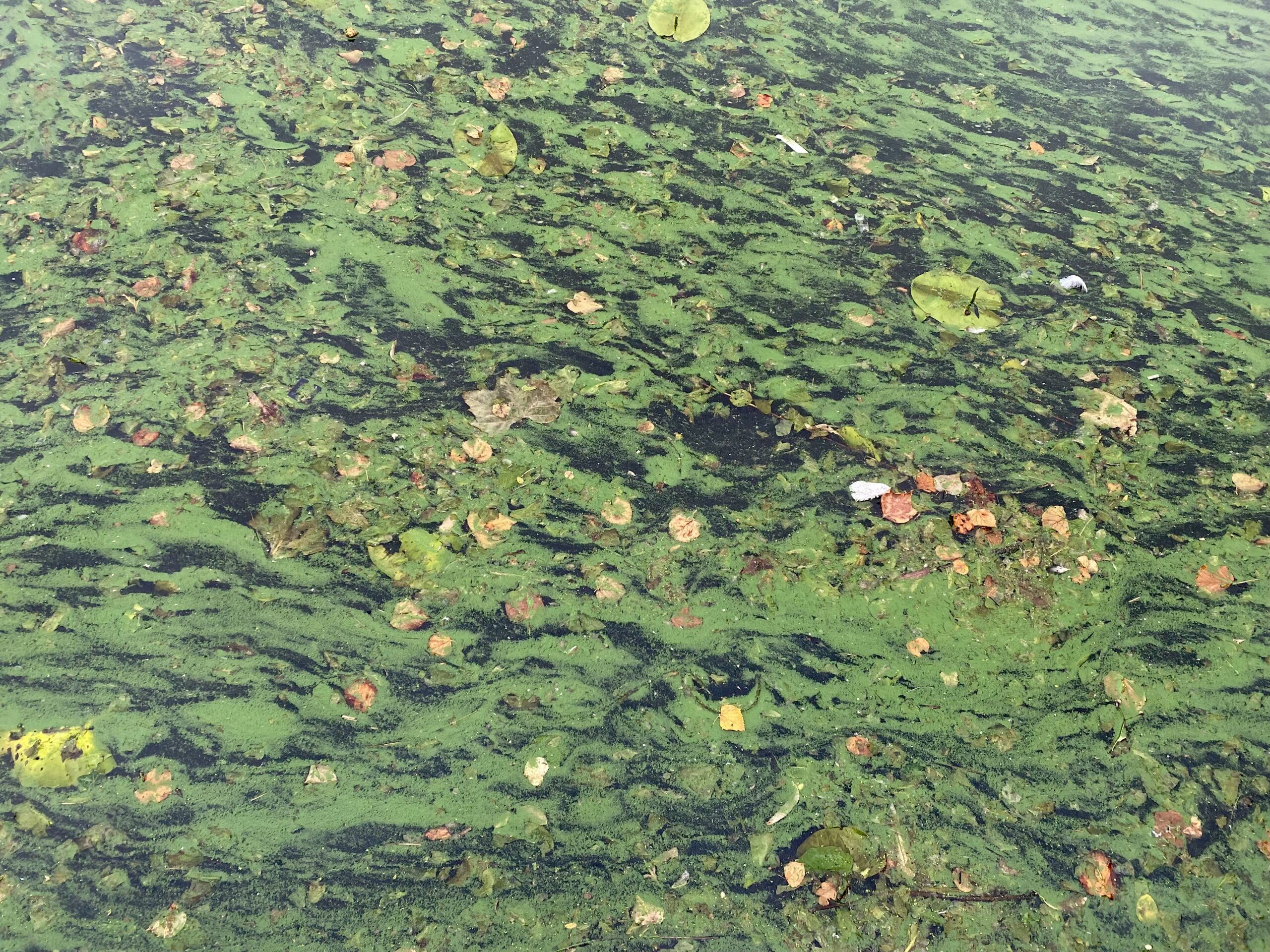
Blue-green algae is responsible for turning the beloved Spaarne River in Haarlem green during the warm summer months. But what causes this algae bloom, and is it dangerous?
Despite its name, blue-green algae is not actually algae; it's a type of bacteria called cyanobacteria. It’s recognizable by a greenish-blue, oily layer that floats on the water’s surface.
Blue-green algae thrives in warm, sunny, and calm weather, especially when water temperatures rise above 23℃. These conditions can cause rapid blooms in the summer and autumn. The bacteria flourish particularly well in waterways rich in phosphorus and nitrogen, often due to agricultural runoff.7
Blue-green algae is common in the Netherlands and is to be expected after extended periods of warm, sunny weather with little to no rain. According to ecologists from the University of Amsterdam, “Climate change is likely to increase [the occurrence of] blue-green algae”.
In September 2022, the event ‘Swim to Fight Cancer’ had to be cancelled due to blue-algae and other contaminants in the Spaarne - a challenging outcome for participants and organisers. Next year, the event is planned for 1 June, with measures in place to monitor the water quality.
Research teams at the UK Centre for Ecology & Hydrology (UKCEH) have developed an app where you can report blue-green algae in your local river, lake or pond. The Bloomin’ Algae app is available for free on Google Play and the App store.
Some blue-green algae blooms can be harmful, so it's not recommended to swim in water where they are present. They can also pose risks to pets and animals.
Blue-green algae can cause skin irritation, and if ingested, it can lead to stomach and intestinal issues. More dangerous species of blue-green algae can produce toxins that affect the nervous system. If you’ve come into contact with blue-green algae, it’s recommended that you wash your hands thoroughly and shower as soon as possible.
Blue-green algae not only impacts swimmers but also poses a threat to local ecosystems. As the algae blooms grow, they can block sunlight from reaching underwater plants, reducing oxygen levels and causing 'dead zones' where fish and other aquatic species struggle to survive.
Swimming in the Spaarne is not allowed for safety reasons, but don’t worry—there are plenty of places to cool off in and around Haarlem.
The Houtvaart is an outdoor swimming pool in the Houtvaartkwartier. It's a community pool with a large sunbathing area and facilities for drinks and snacks.
To the east of Haarlem you will find the Veerplas, a lake with a sandy beach and green lawns - an excellent place to escape the heat. Toward the west, hidden in the Kennemer Dunes you will discover t’Wed.
If it’s saltwater you’re after, you’re spoiled for choice with the long stretches of beach between Zandvoort and Bloemendal aan Zee.
Before you dive in, remember to visit zwemwater.nl to check the water quality at your local swimming spot.
We hope you enjoyed this glimpse into the vibrant life of Haarlem. For more stories, tips, and local insights, keep exploring HaarlemToday. Don’t forget to share your favorite articles with friends and join the conversation on our social media channels. Until next time, keep discovering the unique flavors and experiences that make our city special.
@Carla Wessels (Team Haarlem today)
